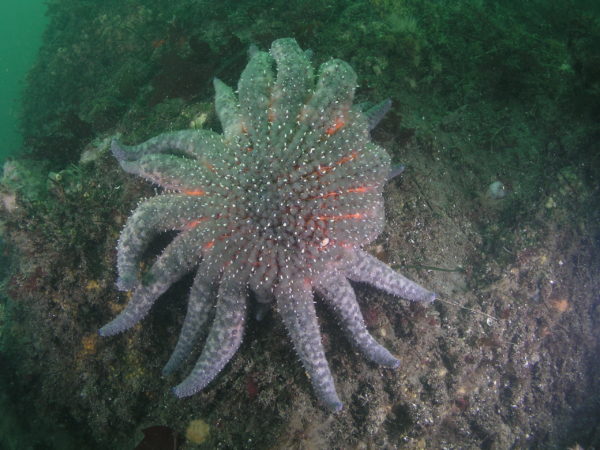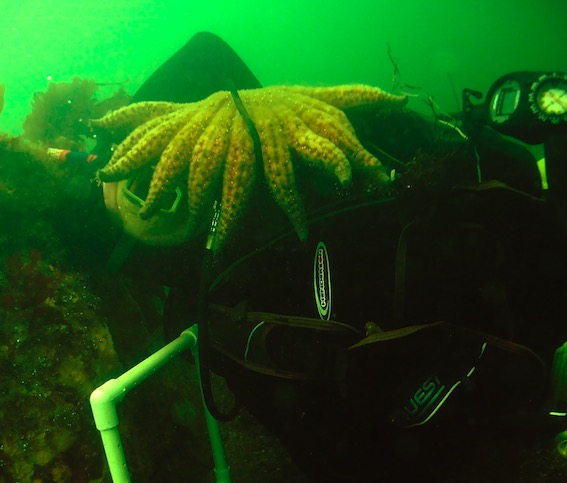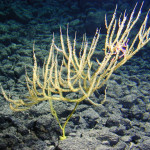Back in the day, I ran some experiments looking at different California kelp forest predators and their effects on trophic cascades. It was a fun time, doing things like banding Cancer crab claws and then watching how they still pinned down kelp crabs like a boss, making them run away in fear. But there was one predator I tested that stunned me, and, welp, made me a little fearful.
The sunflower star, Pycnopodia heliantoides.

I thought these big multi-armed beasts were pretty neat, but, then I watched one engulf a softball-sized red urchin (and that’s softball before the big spiky spines), and a day or so later, spit out all of the hard parts. Not sated, it then ate all of the purple urchin in the tank. Basically, it was a remorseless eating machine.

Couple this with a few old-marine-biologist’s tales of giant man-sized Pycnos and tales of their wandering off into the deep, with no ability to track them, and you can see why it took me a bit to conquer my fear of them for my usual profile picture.

Now, shows me that, um, I might have been right.
Sure, we know that they can hoover up reefs of tiny sea cucumbers, or affect smaller purple urchin barrens, but Burt et al. show that Pycnos have an impact that is even stronger than otters! Even cooler, they discovered this due to two simultaneous natural experiments – otters moving back into a historic part of their range (which they’d been hunted out of, so, natural?) combined with sea star wasting disease wiping out Pycnos a few years after. I’ll let their video explain even better.
For me, this work was deeply personal. My own early work tried to think about how a post-otter California was able to avoid the devestating consequences of their loss seen in the Aleutians. I always viewed Pycnos and the other predators as mere redundant species, with many of those predators being necessary to equal the raw force of otters. Burt et al. are really breaking the paradigm here, showing that while otters are absolutely key, that diversity still matters. Because the real urchin horf-master of the deep is Pycnopodia. All hail!
Also, as an added reward from the dive team, everybody dance now!
References
Burt, J.M., Tinker, M.T., Okamoto, D.K., Demes, K.W., Holmes, K., Salomon, A.K., 2018. Sudden collapse of a mesopredator reveals its complementary role in mediating rocky reef regime shifts. P Roy Soc Lond B Bio. 285, 20180553. doi:10.1098/rspb.2018.0553
Byrnes, J., Stachowicz, J.J., Hultgren, K.M., Randall Hughes, A., Olyarnik, S.V., Thornber, C.S., 2006. Predator diversity strengthens trophic cascades in kelp forests by modifying herbivore behaviour. Ecol. Lett. 9, 61–71. doi:10.1111/j.1461-0248.2005.00842.x (aw, my first dissertation chapter! wudda!)







To be able to eat a softball-sized red urchin is crazy, just how big can these stars get? Maybe, just maybe they could get to me man-sized!! Awesome.
Its a beautiful creature. In the video at first I thought its an octopus.
Most starfish have semi-rigid skeleton, but there are many different elements on the skeleton of the sunflower star. They allow you to open the mouth of the surah, its body gets bigger and gets a bigger hunt. Thanks for sharing such an awesome content.
Very Cool starfish
Definitely thought that was an octopus in the video, very strange to see.